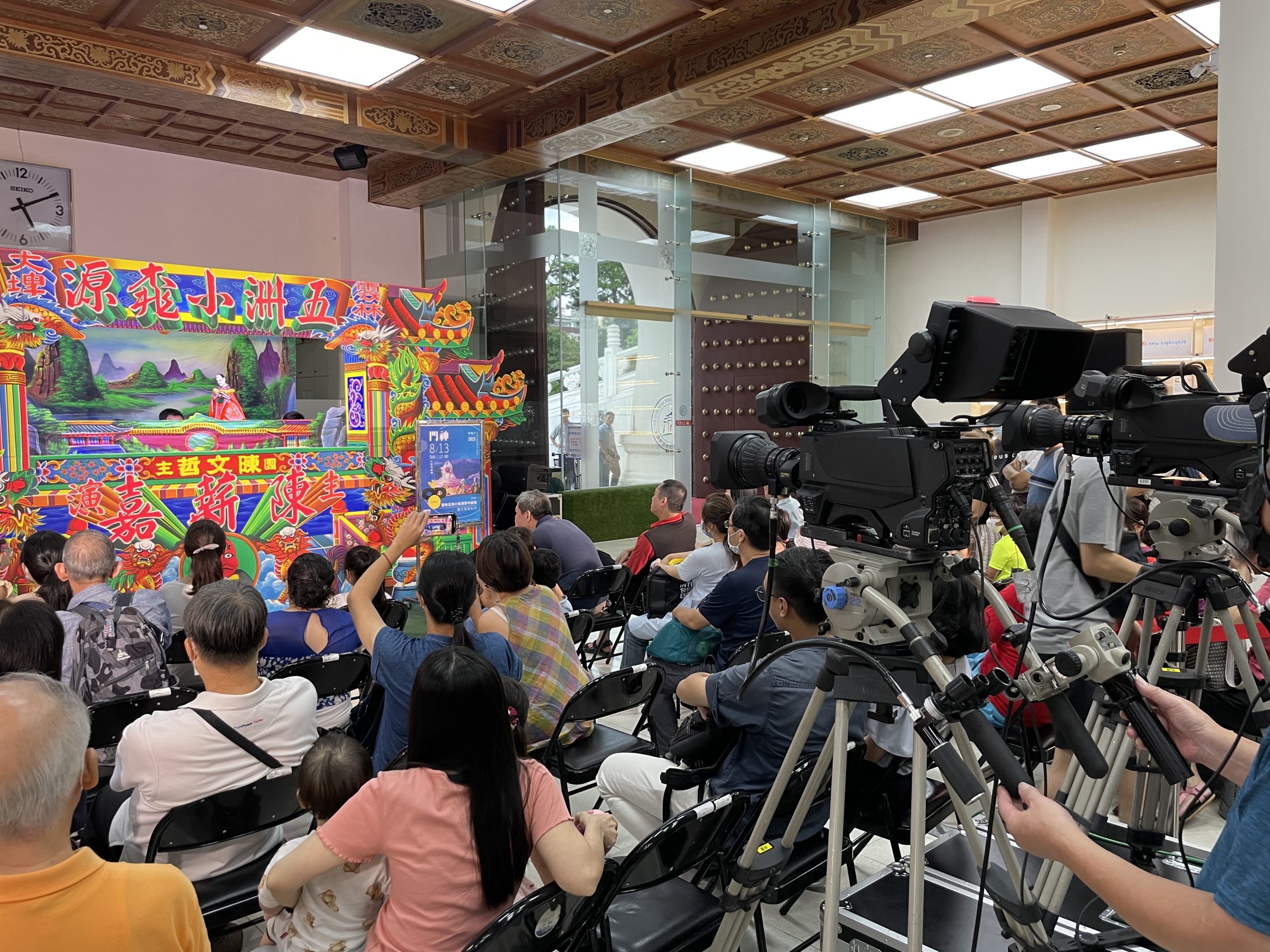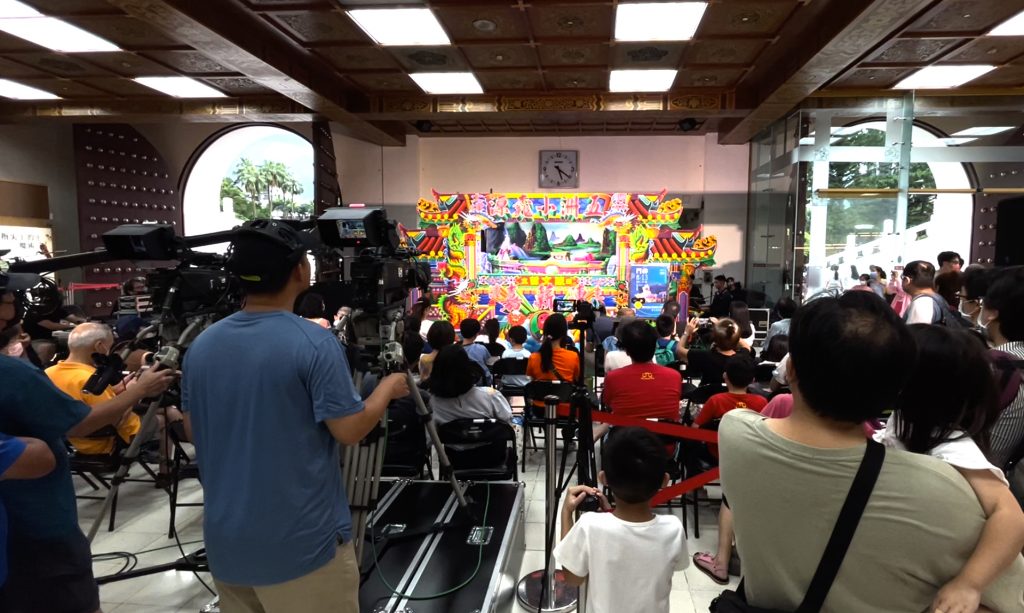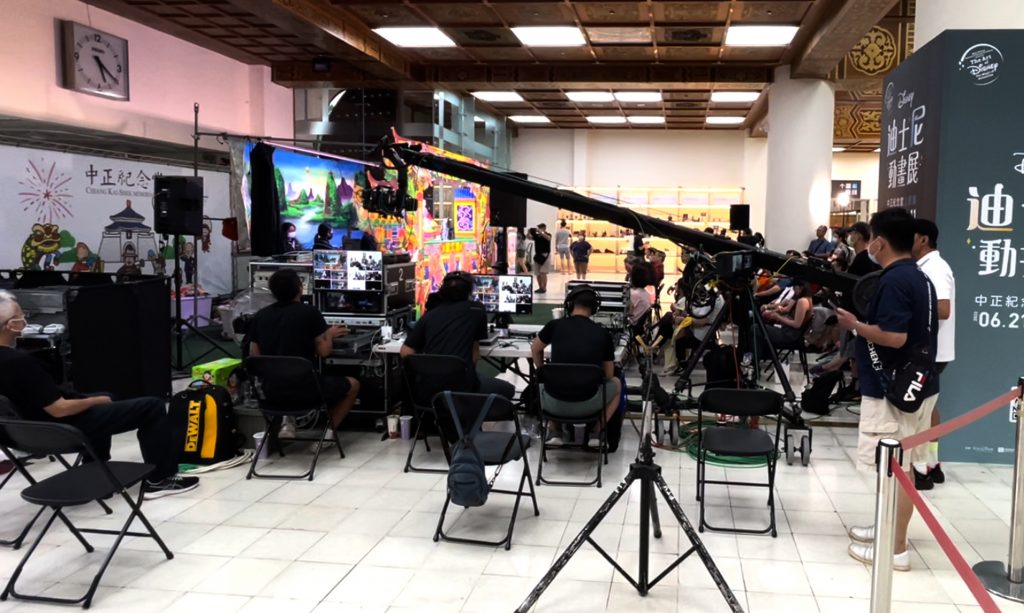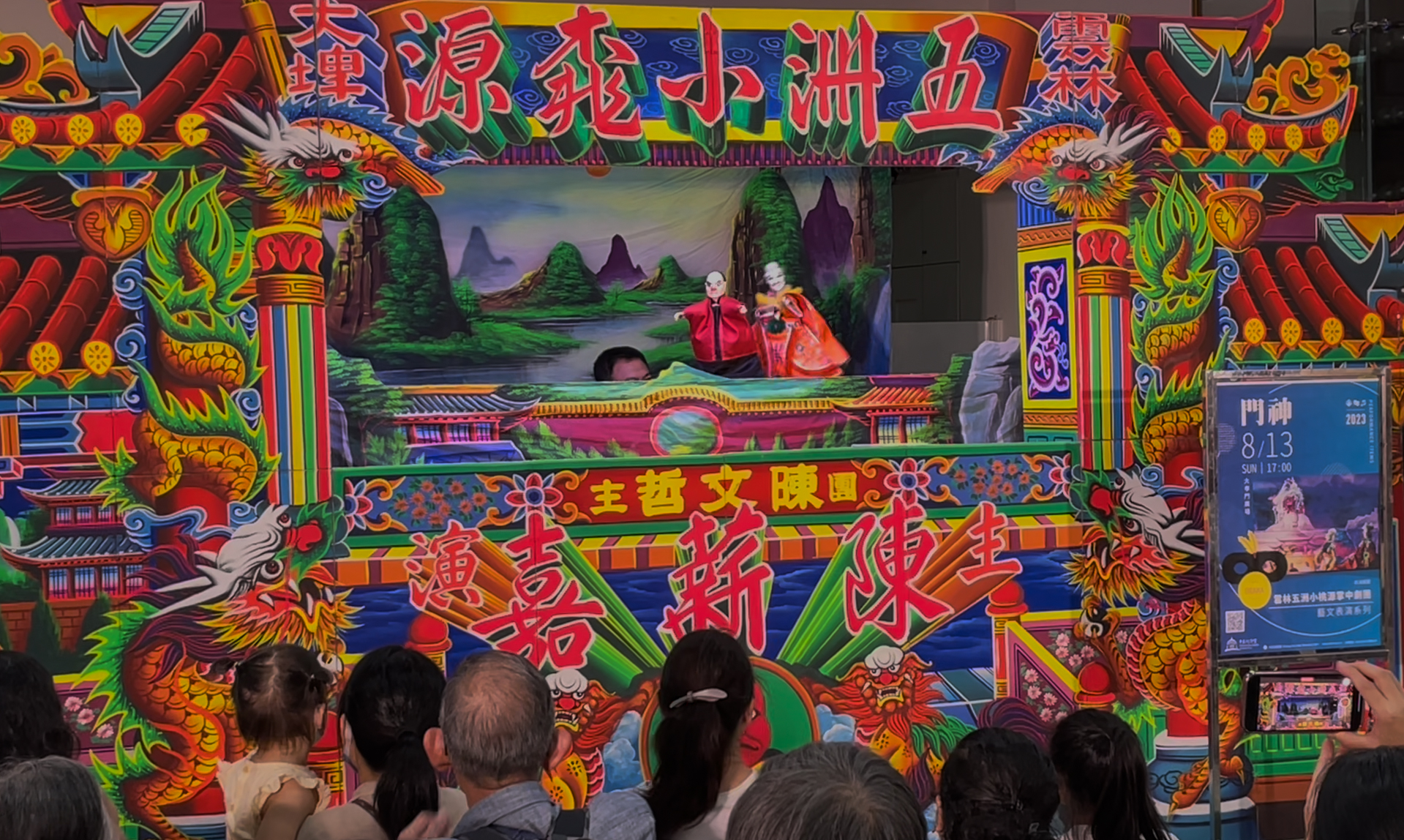On August 13, 2023 at 5pm we visited a puppet performance in the ground level hall of the Chiang Kai-shek Memorial Hall in Taipei, a national monument that is surrounded by a park and flanked on the north and south by the National Theater and the National Concert Hall. Puppet troupe Yun lin: wu zhou xiao tao yuan performed 門神 “The god of door.”
There were about 30-50 audience members, mostly seated on folding chairs in front of the portable stage, four musicians, three puppeteers and about eight to ten professional technicians who operated several video cameras, one of them mounted on a camera crane. In addition to these professional cameras audience members frequently held up their i-phones to either record the performance – or watch it in “Zoom in mode” through their screens.
Because we arrived a few minutes after the start of thr show (it was not easy to find out where exactly in this giant memorial hall the performance was taking place) we watched most of the performance from behind the video-operators (placed opposite and to the side of the stage), and therefore had the ideal viewpoint to contemplate the presence of these mostly dark dressed technicians and their black recording and sound equipment devices, which stood in stark contrast to the bright colors of the stage and the puppet costumes. While most cameras stood on tripods and were operated by their handlers only very subtly mostly zooming in or out, one large camera crane turned into a character and thus became the counterpart of one of the biggest puppets used in the puppet show: the dragon, a symbol of profound significance in Chinese culture. The performance of the dragon in a traditional puppet play, the performance of the camera crane, the performance of puppets and puppeteers together with the many performance of audience members who held up their smart phones to film, added an interesting level of complexity to our contemporary ways of story-telling.
From a very formal point of view, the big expensive cameras watching from across the stage in this “preservation of intangible heritage setup” have replaced the deities that are usually seated across the stage to watch the performance during a temple performance. If this formal observation can also be interpreted in metaphorical and symbolical terms, is one of the driving questions that we are pursuing with this research project. Have our technological recording devices replaced the watchful presence of deities, icons and gods?
If the “institutional, professional, highly expensive” takes the place of the deity, do the recording phones in the hands of audience members serve as an aid in observance like the smoking incense sticks serve as an aid in religious rituals? Or is it more like Natah Jurgenson describes in his book “The Social Photo:”
Social photography, and the the audience it promises, position us in the present with a constant awareness of how it will be perceived in the future. We come almost anything we do as a potential image, imploding the present into the past, and ultimately making us nostalgic for the here and now. Social photography, as well as social media more generally, encourages users to take the present as a potential document to be seen by others.



